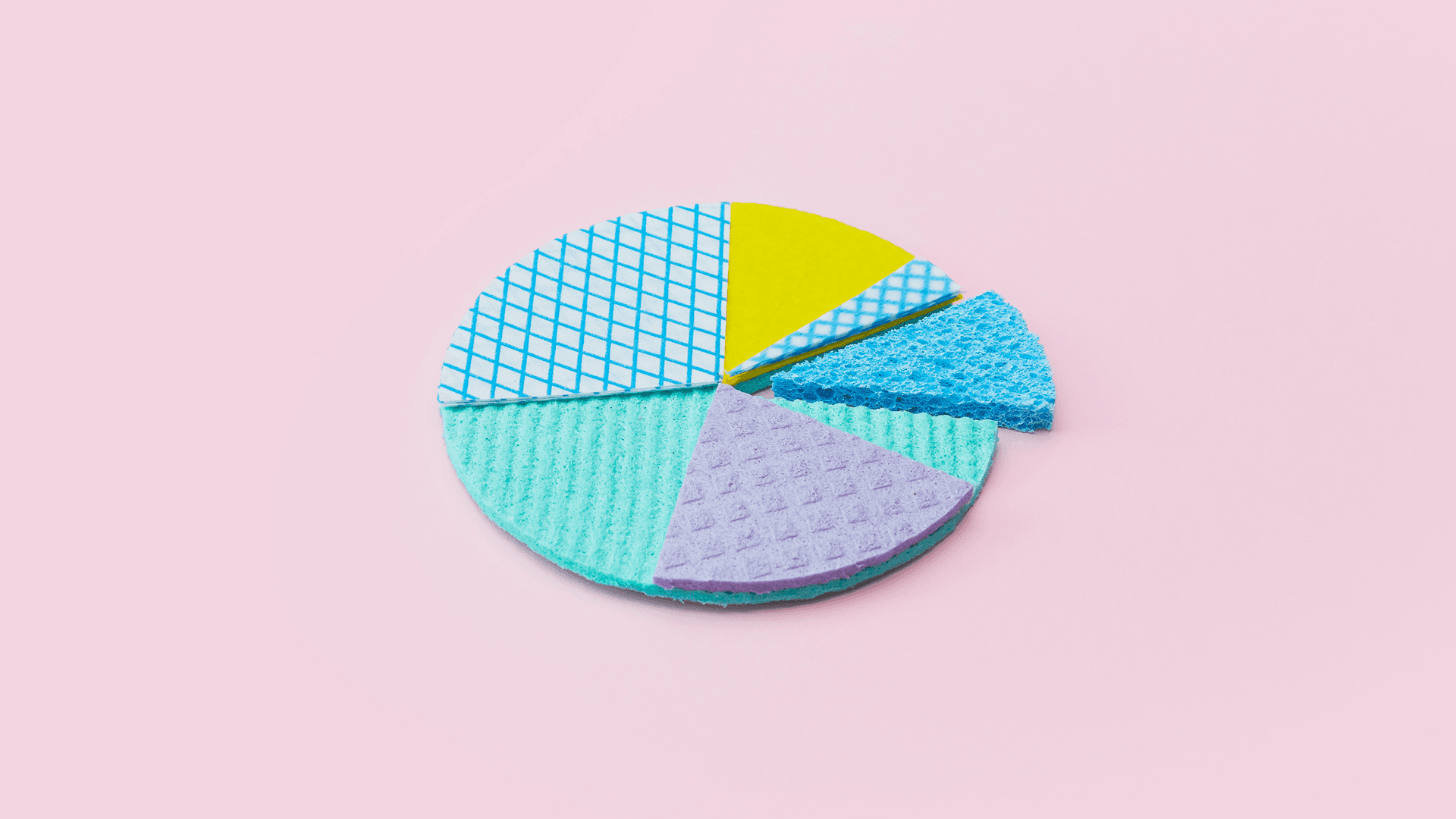6 Behavioral Segmentation Examples That Drive Personalization
Learn how putting behavioral segmentation into practice leads to more personalized marketing campaigns.
The behavioral segmentation examples covered in this blog result from sorting your customer base into different groups based on observed patterns of interaction with your brand.
These patterns can fuel your personalized marketing campaigns, and the more patterns you identify, the better you can match an experience or message with customer intent. Customers will feel like your brand is speaking directly to them, laying the groundwork for customer loyalty.
Investing in behavioral segmentation tools benefits your bottom line. According to a 2022 survey, 88% of respondents were likely to stick with online brands offering a “personalized shopping experience.”
Key takeaways
- Behavioral segmentation is a market segmentation approach focusing on customers’ motivation to engage with your brand.
- Behavioral segmentation helps you retain the customers you spend so much to acquire.
- The data gathered from behavioral segmentation helps you create personalized marketing campaign experiences.
- Focusing on the right components or types of behavioral segmentation can give you actionable insights.
- Successful behavioral segmentation depends on having the right tools and analytics, like Amplitude Audiences, to measure your efforts' success.
Behavioral segmentation overview
Behavioral segmentation goes much deeper than geographic or demographic segmentation, helping you uncover what motivates your target audience to engage with your brand.
Take first-time buyers. One group of customers might purchase because of your witty Instagram content, while another group is motivated by your reasonable prices. Should you market to both audiences the same way? Behavioral segmentation helps you decide.
However, uncovering these behavioral patterns typically requires some technology stack optimization.
First, we recommend choosing a tool to track and make sense of customer touchpoints with your app or website. With an Amplitude integration, for example, you can quickly learn whether customers take the journey you intended. By setting up A/B tests, you can see which prompts move customers closer to your desired outcomes and create new behavioral data segments for more precise messaging.
Then, we recommend tools to help translate these behavioral insights into communications that convert. These tools should support short message service (SMS) and email marketing platforms, customer relationship management (CRM) platforms, and push notification widgets.
Behavioral segmentation components
Successful behavioral segmentation depends on knowing which components of customer behavior to track. These components are the foundation of any segmentation strategy and the tactics that flow from it.
Frequency of buying or usage
An essential behavioral segmentation component is knowing how often existing customers purchase a product or engage with your content.
Heavy users or buyers are more advanced in their relationship with your brand than light users. As a result, they shouldn’t receive the same engagement campaigns.
Once you’ve established these usage behavior groups, tailoring your outreach will help you keep heavy users consuming while encouraging light users to increase their engagement levels.
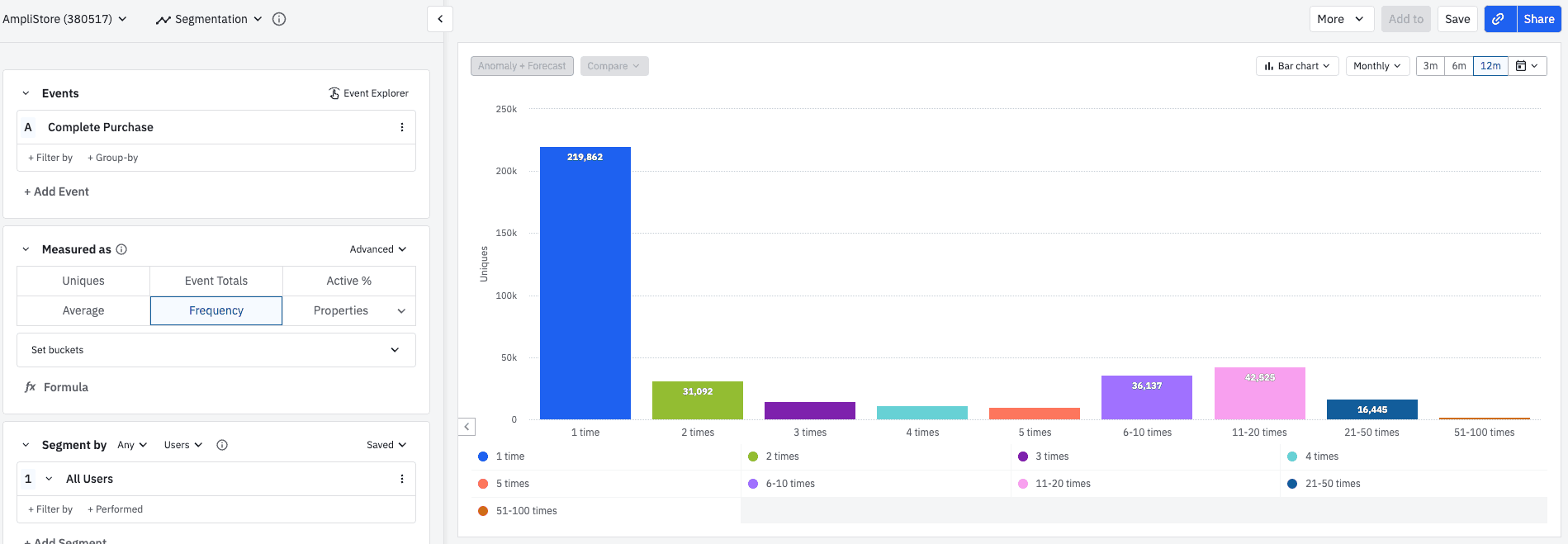
Occasion purchasing
Once you know how frequently customers purchase, the occasion component helps you understand if customers buy or engage at specific times.
Birthdays and anniversaries are the most common occasions that drive predictable purchasing behavior. With the right marketing messaging, these customer segments might increase their average order values during their preferred buying occasions.
Customer journey stage
When you segment customers based on their buyer’s journey stage, you assume that readiness to buy varies from person to person.
For example, a potential customer joining your mailing list is closer to a purchase decision than someone landing on a product page and exiting. You can’t market to these customers similarly and expect similar results. We recommend nurturing each to a completed checkout based on where they are in the sales funnel.
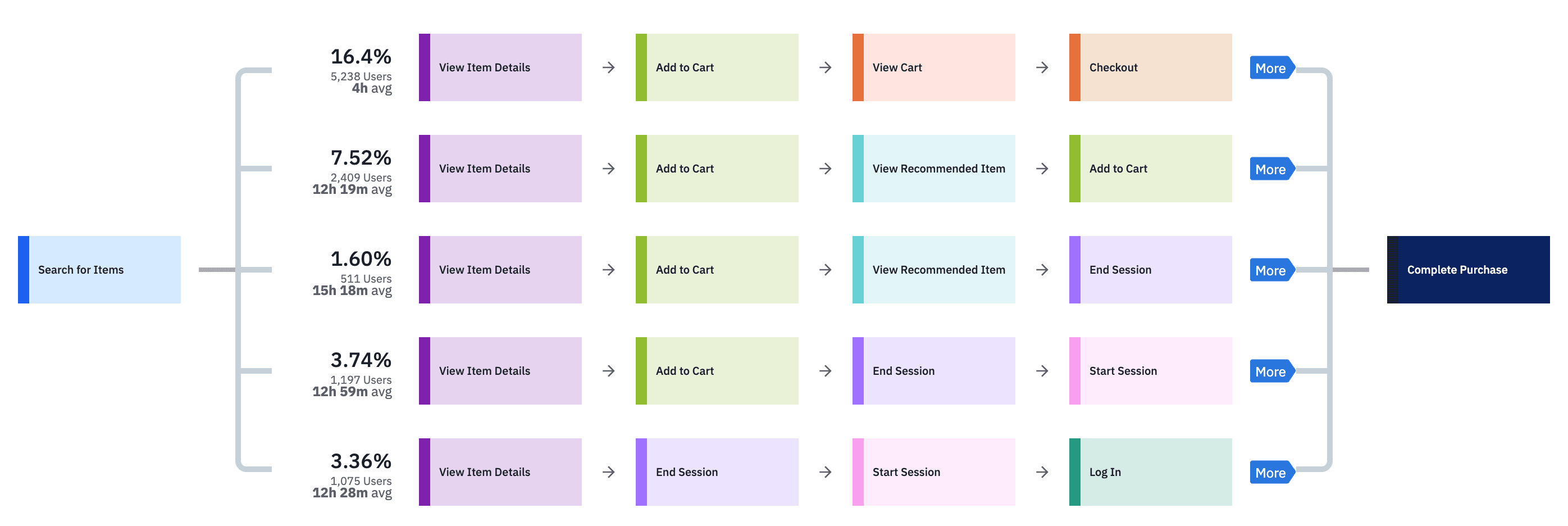
Desired benefits
Customers buy products and services for different reasons. When you understand the desired benefits that motivate a customer to buy, you can personalize your messaging around that motivation.
For example, some customers might buy your product because they admire your stance on a particular social issue, while others might think your brand is more aspirational than others. Understanding their desired benefits can keep you from alienating one set of customers with irrelevant content or offers.
Depth of brand loyalty
Identifying the behavior patterns that lead to genuine loyalty—like frequent purchases and referrals—can help you move more customers in that direction.
Once you’ve identified loyal customers using this component, you can reliably treat them like VIPs, furthering their loyalty.
Customer satisfaction level
An unsatisfied customer is still a customer, but failing to acknowledge their issue and treating them as though nothing is wrong can further alienate them.
Separating dissatisfied and satisfied customers enables you to focus on churn prevention with the former and loyalty with the latter.
Six examples of behavioral segmentation components in action
Once you’ve used the behavioral segmentation components to create customer profiles, you can use these insights to drive up customer lifetime value.
1. Schedule marketing messages around buying occasions
If you know the occasions that prompt customers to buy your product or engage with your app, you can use preemptive messaging to drive continued engagement.
Successful segmentation based on occasion behaviors depends heavily on the nature of your product, service, and industry. For example, let’s say you run an online jewelry store, and you have a category for engagement rings. The occasion driving that purchase is obvious, and then you can send gift ideas—with a discount—when the customer reaches anniversary milestones.
Or your music-streaming app might see usage surge in the early morning hours while listeners are exercising. You could send a push notification in the evenings with playlist recommendations motivating them to work out the following day.
You can identify similar buying occasions for business-to-business (B2B) companies. Let’s say your sales team sees an uptick in leads around significant industry trade events. You could offer new customers an incentive, like one month free, for signing up during the trade show season. Similarly, you could incentivize existing customers to prevent them from evaluating competitors at the show.
Key metric: Returning customer rate
Calculate how many customers in the segment convert after receiving your occasion campaign.
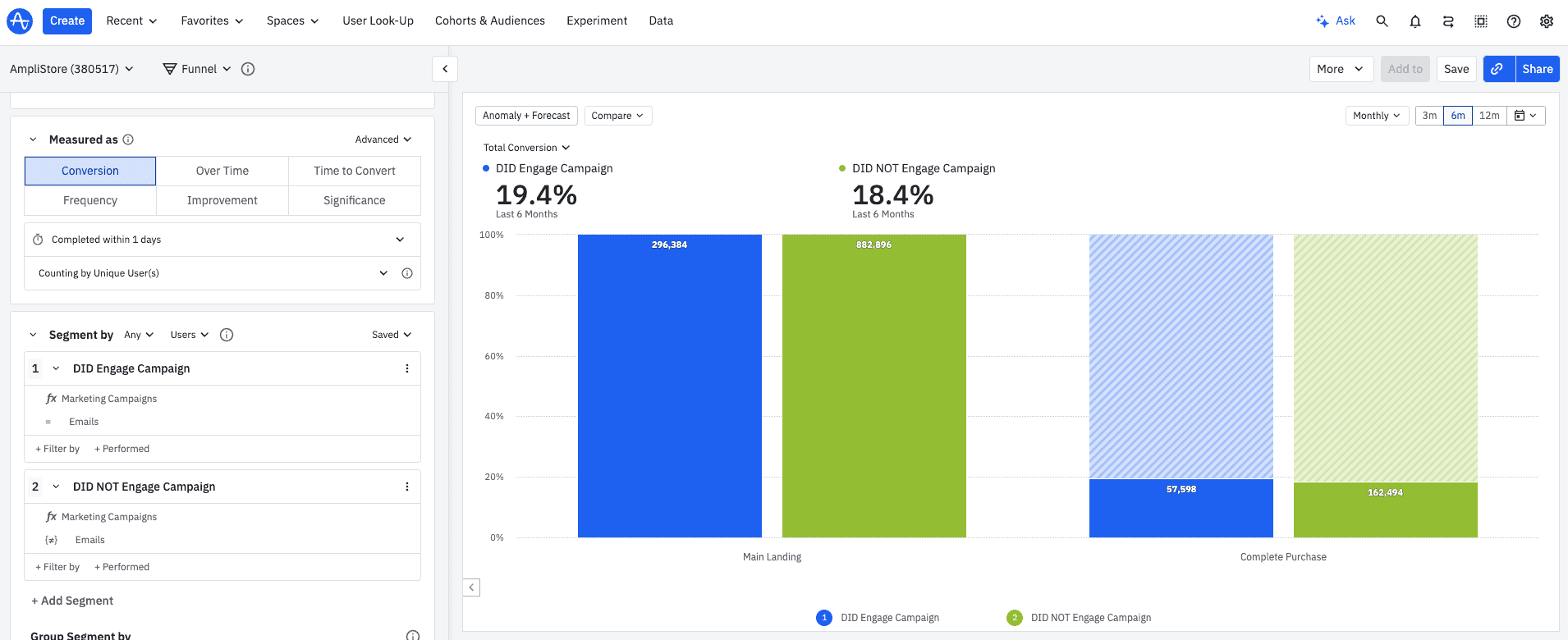
2. Tailor offers to a customer’s journey stage
Customer journeys are messy. Some first-time buyers don’t place another order in the next 60 days, while others can’t wait for your upsell email. Behavioral segmentation helps you target upsell offers to those most likely to take advantage.
Suppose you want to move subscribers from your free software plan to a paid one but don’t want to seem pushy to contented customers. You could sync Amplitude with your software platform and use our predictive cohorts feature to create an outcome such as “upgrade from free to paid plan in the next 60 days.”
Amplitude would analyze the behavior of customers who upgraded in the past 60 days and create a cohort of customers whose recent behavior makes them likely to upgrade. And if you sync Amplitude with a marketing automation tool, like Klaviyo or Marketo, you could send your upgrade email or SMS to just this new segment.
Tailoring offers to a customer’s journey stage would increase your confidence that campaigns are going to customers whose recent behavior merits them.
Key metric: Average order value
After you send your upsell promotion, see if average order values increase in the next 60 days.


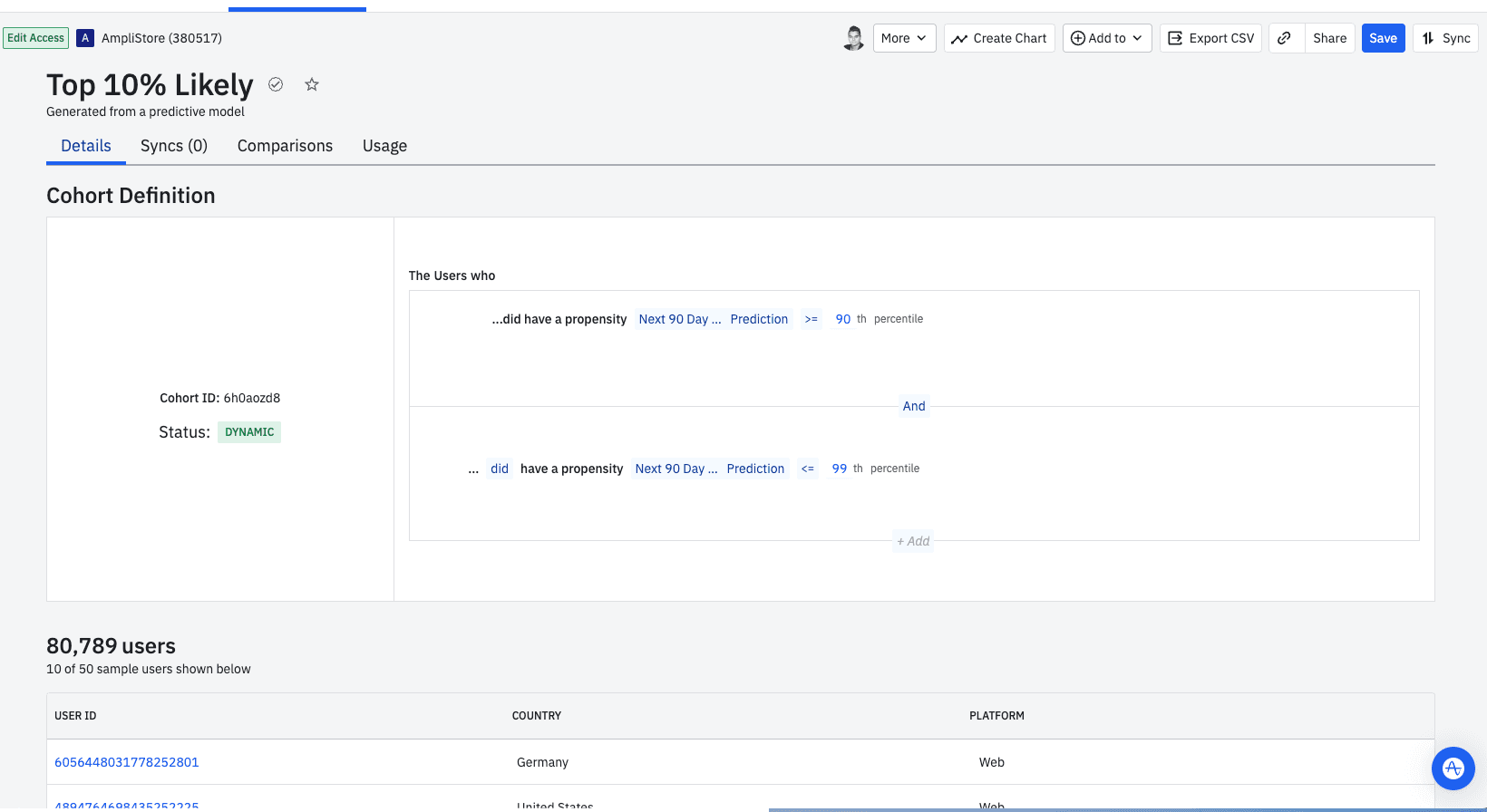
3. Send a special win-back campaign to dissatisfied customers
Unhappy customers can damage your brand with negative social media reviews. You can segment these customers and send win-back campaigns to offset the damage and keep them in the fold.
Customer satisfaction levels can drop for many reasons—lengthy hold times, product issues, and so on. The good news is that dissatisfied customers can forgive you if you handle these situations appropriately. Sixty-five percent will consider sticking with your brand if you take action.
Administering a survey after particular customer interactions is a popular way to determine customer satisfaction levels. For example, after a customer purchases or creates a support ticket.
Amplitude integrates with survey provider Survicate to create segments out of positive and negative survey responses. You can sync these segments with your SMS or email marketing tool and create a win-back campaign with the following:
- An apology from someone in authority at your company
- An incentive for the customer’s next purchase
- A solution to the situation so it won’t happen again
Key metric: Customer retention rate
Calculate how many dissatisfied customers stick with you after receiving your win-back campaign.
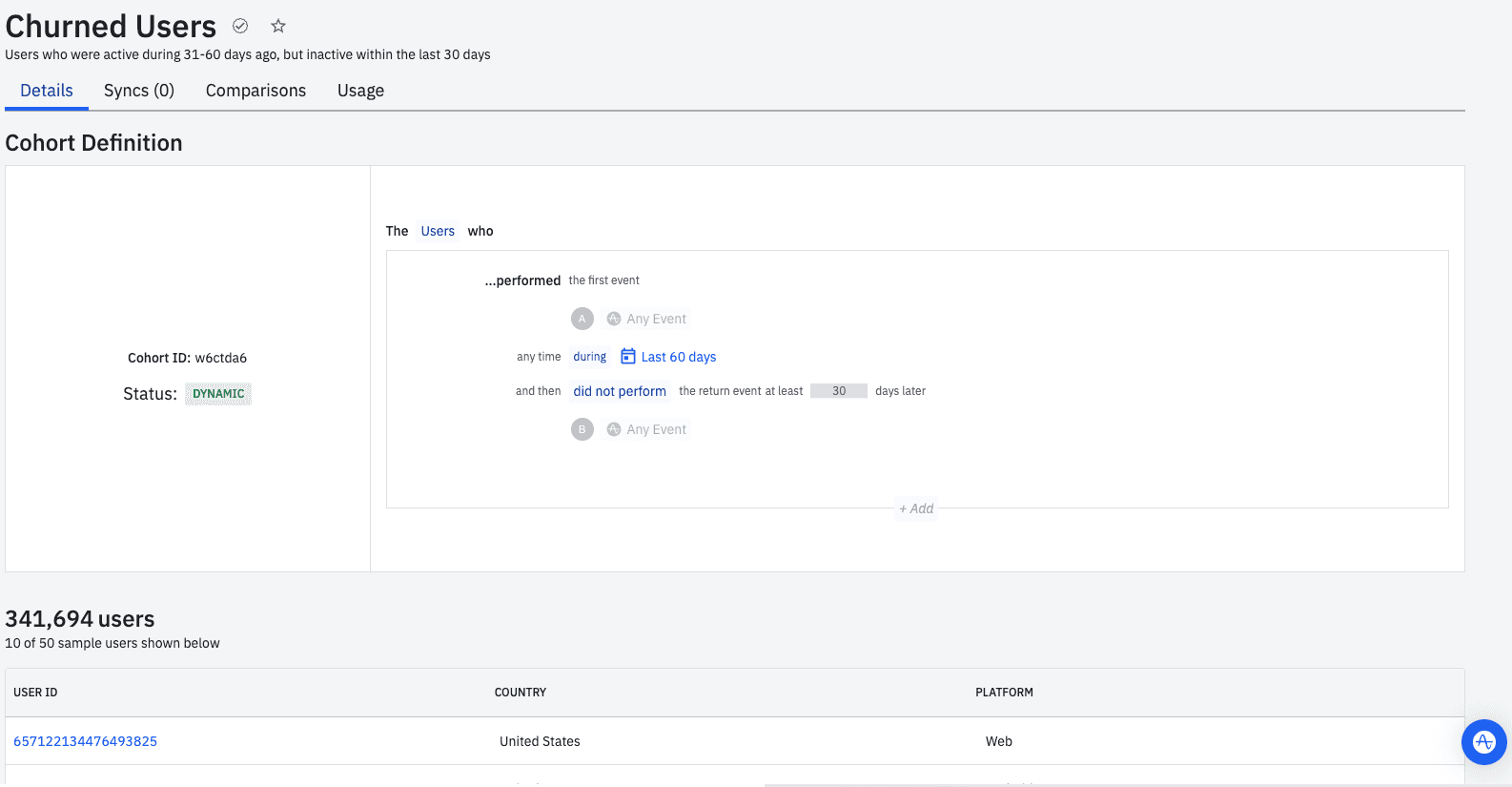
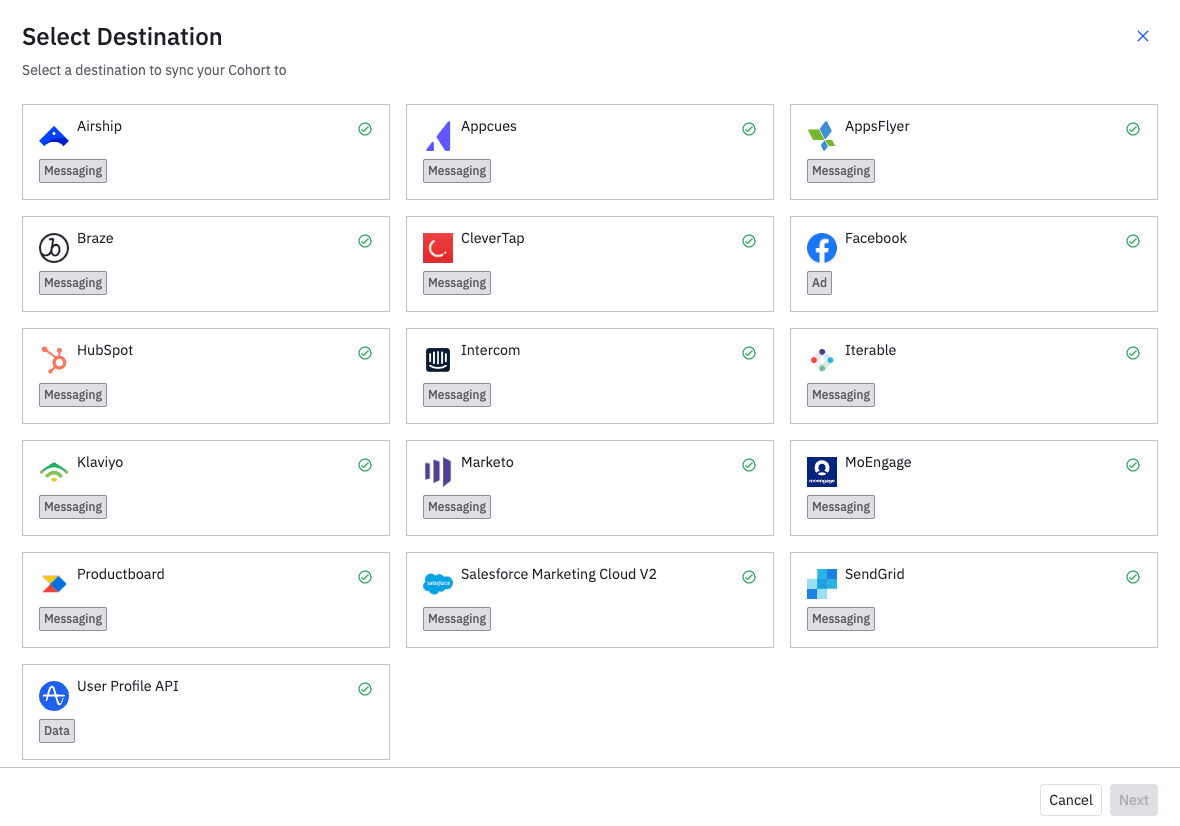
4. Create a tiered loyalty program to grow retention
Understanding loyalty behavior is vital to increasing customer engagement, and a tiered loyalty rewards program can help you:
- Identify your most devoted customers.
- Uncover how loyal they are.
- Determine what drives them to remain loyal.
You can use this information to create a variety of loyalty segments and market to each based on observed behaviors to move them to higher levels of engagement and spending.
Tiered loyalty programs reward customers based on their spending habits, reserving the most valuable benefits for top spenders. Tiered programs have a 1.8 times higher ROI than tier-less programs.
For example, Vitamin Shoppe awards a point for every dollar spent to all loyalty program members, with $200 spent annually unlocking advanced nutrition coaching and $700 opening exclusive “choose your own sale” days. Customers who belong to the $700 tier and use the benefits frequently are their true VIPs.
Suppose you have a similar loyalty program. You could incentivize customers close to the $700 annual spend mark with a one-time VIP event to see if they find enough value to join that higher tier. You could also send them a free surprise holiday gift as a token of appreciation.
Key metric: Net Promoter Score® (NPS)
Send an NPS survey to your loyalty program members and gauge different benefits' impact on loyalty levels.
5. Offer a subscription experience to frequent buyers
Subscription sales are projected to hit $38 billion in 2023, up from $32 billion in 2022. Depending on the nature of your product or service, a subscription can be the perfect way to add value to regular buyers.
Buying frequency means different things to different brands. A customer won’t buy an electric drill as frequently as a bag of coffee. But once you identify customers who buy coffee at a regular cadence, a subscription can save them the trouble of placing repeat orders.
Subscriptions are worth considering if you sell a consumable product. To streamline this process, you’ll likely want to implement and integrate a subscription platform with your e-commerce platform so you can send emails with subscription enrollment invitations to frequent buyers close to placing their next order.
Brands such as KIND Snacks include a discount on a customer’s first subscription order and a deeper discount if they stay in the program for a specific duration.
Key metric: Customer lifetime value
Determine whether the convenience of a subscription leads to higher lifetime values.
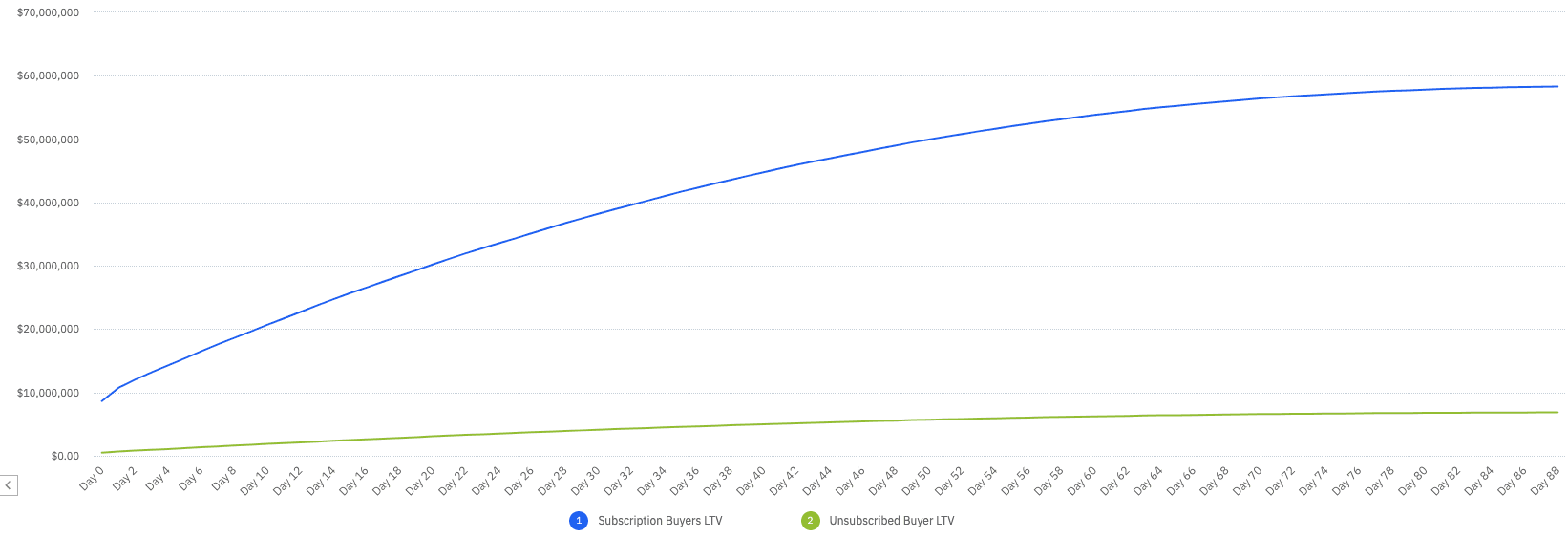
6. Ask customers to fill out a questionnaire to determine desired benefits
Sometimes, asking your customers what they want from your product is the best way to create behavioral segmentation variables. Questionnaires or quizzes can gather data about customer preferences to personalize pre- and post-purchase messaging.
Customers are more willing to share personal data than you might think. As recently as 2022, 86% of customers said they would likely “trade their data in order to enjoy personalized offers based on their interests.”
Take skincare. Brands such as IL MAKIAGE invite customers to complete a quiz to find the right concealer for their skin tone. But you can also use the quiz to answer questions like:
- Does the customer care about sustainably produced products?
- Does the customer care about other products besides concealer?
Doing so helps you avoid cross-selling or upselling customers on products they might not care about. Quizzes are easy to create and install on your e-commerce platform
Key metric: Customer acquisition rate
Calculate how many customers place an order after completing a survey and compare it with your overall acquisition rate.
Improve your behavioral segmentation with Amplitude
Segmenting your customers based on their behavior—from their buying frequency and occasion to their loyalty and satisfaction levels—can significantly increase the success of your marketing campaigns and improve all your essential metrics: customer retention, acquisition, revenue, and more.
Amplitude Audiences makes it easy to personalize your customer experience with behavioral segmentation using machine learning algorithms to boost the efficiency of the segmentation process and optimize sales and marketing endeavors.
Get started with your behavioral segmentation initiatives with Amplitude’s free plan.

Darshil Gandhi
Director, Product Marketing, Amplitude
Darshil Gandhi is a Director of Product Marketing at Amplitude. He leads global technical and partner product marketing, collaborates with product and go-to-market teams on strategy, positioning, messaging, campaigns, and enablement. He was previously a solutions consulting team principal at Amplitude, and has helped dozens of Amplitude customers turn their data into actionable insights. Darshil graduated from Dartmouth College with a Masters in Engineering Management.
More from Darshil
